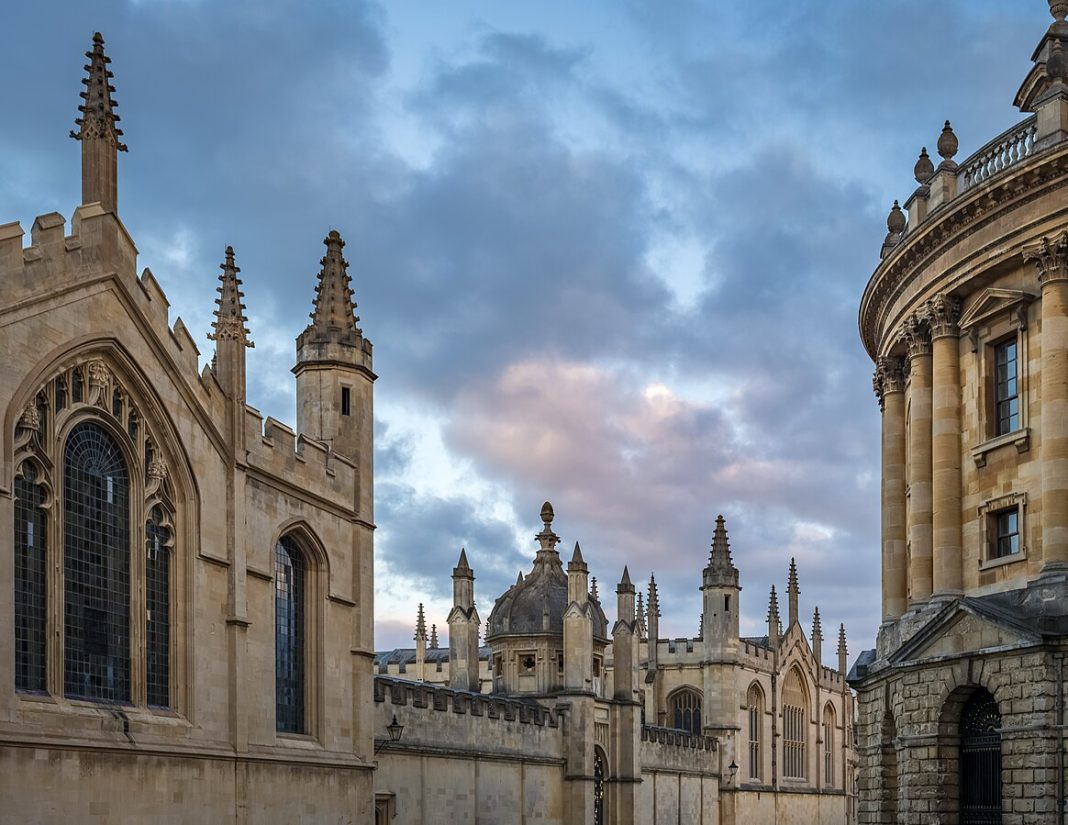Oxford occupies a mystical, almost fantastical place within the American psyche – so much so that when I told my peers I’d be studying abroad, they had me promise not to join some clandestine cult. And I nearly succeeded, save for the Union. Brits can hardly scorn Americans for their fanciful notions, not in the cultural context of countless films depicting elite ceremonies and bacchanal celebrations within this storied institution.
Released in late 2023, and coinciding with my own application, BAFTA-nominated Saltburn chronicled the schemes of a freshly matriculated Oxonian to penetrate aristocratic circles. Images of a campus populated by hacks and heirs permeated my mind, of restless youths socially estranged yet alike in their pursuit of hedonism. Saltburn even filmed prominently on the grounds of Brasenose College, providing for easy immersion. It was, incidentally, at a Brasenose formal that I realised wearing gowns to dinner could be lodged so deeply within college identity. As anticipated, enquiry into similarly deceptively frivolous traditions only triggered flurries of “What are they teaching you in America?”, among other disdainful remarks echoing the patronising air of Saltburn’s Lady Elspeth.
However tempting to dismiss the film as offensive, exaggerated, and perhaps defamatory, I can’t say the movie, surmised succinctly on Letterboxd as “Parasite written by Oscar Wilde”, was entirely inaccurate in its portrayal of insidious hierarchies obscured by trite affectation. Just this April, a Worcester College professor published a book revealing that a chalice fashioned out of a (most likely enslaved woman’s) skull had quenched the thirsts of formal-goers until 2015. Despite inviting reactive scrutiny, sensational scenes of debaucherous secret societies propagated by films like The Riot Club largely distract from, rather than illuminate, these truly disturbing transgressions and the human cost fused to any institution as enduringly influential as Oxford. Still, we settle for the Saltburn types, seeing as a movie tracing the provenance of every artifact in the Ashmolean might not sell out at box offices.
Far more palatable than a truly incisive exposé is the tale of a bright-eyed American enamoured with her dashing yet non-committal English tutor, as featured in Netflix’s newest production, My Oxford Year. Well, palatable despite the fact that intimate tutor-student relations were banned two years ago. I suppose it’s simply more pleasant to envision a world where models in 24/7 sub fusc frolic through cobblestone streets and muse about crumpets than to ruminate on such power dynamics. Unsurprisingly, the film is irretrievably divorced from the experience of an actual ‘Oxford year’, or at least mine. Duke Humphrey’s Library, for instance, certainly isn’t the ‘inner sanctum’ of Oxford the trailer alludes to, given most students would attest that philosophising in smoking areas and expeditions through waterlogged meadows still offer greater fulfilment than cramming in a library that forbids tote bags. Netflix purges the streets of the scooters and townies and kebab carts that linger in the periphery of every proper night out, opting for an idealised playground quite distant from my own memories. This hollow commercialisation of Oxford by projects profiting from uninformed American idolatry neglects its more radical history of illustrious alumni spanning rogue authors to artistic visionaries.
When presented in film, the works of such mavericks have proven iconic. The beloved predecessor to Saltburn, Brideshead Revisited, documents the Oxford-borne infatuation of middle-class Charles with his friend Sebastian’s noble lineage and estate. Screen adaptations of the novel by Evelyn Waugh propelled a narrative authentic to Oxford’s bohemian flair into the British mainstream, casting the institution as a sort of sanctuary for libertines within the walls of its secret garden. Indeed, Waugh, among other prolific aesthetes, had homosexual affairs during his studies here, lending historical credence to the fantasy of a university culture defined by the potential for privilege to cultivate looser social norms. While I may be overly eager to deem Brideshead Revisited a benchmark for accurate portrayals of Oxford, its themes do reflect that special leniency afforded to unconventional characters in prestigious, uniquely insulated spaces. Few lessons from Freshers’ Week have resonated with me as regularly as ‘nobody in Oxford is normal’. The abnormality of such a student body is a beautiful thing, but I sincerely pity the director who seeks to capture it.
In my colourful, fleeting year, I encountered literary dilettantes, bon vivants, neurotic salesmen, and disillusioned activists, all plagued by aspirations too abstract to translate to a sealed script. Any attempt to do so would skew toward caricature, since Oxford has been embedded into the Western canon for so long it exists in equal capacity as both university and concept. Movies dependent on the mere idea of a place are doomed to lack genuine settings, so they rely on cheap crutches engineered from stereotypes and whispered lore. Oxford on film offers an allure resembling that of the ‘American Dream’ – fabricated, but surely the product of something real, something magnificent by virtue of its rawness. Right?


